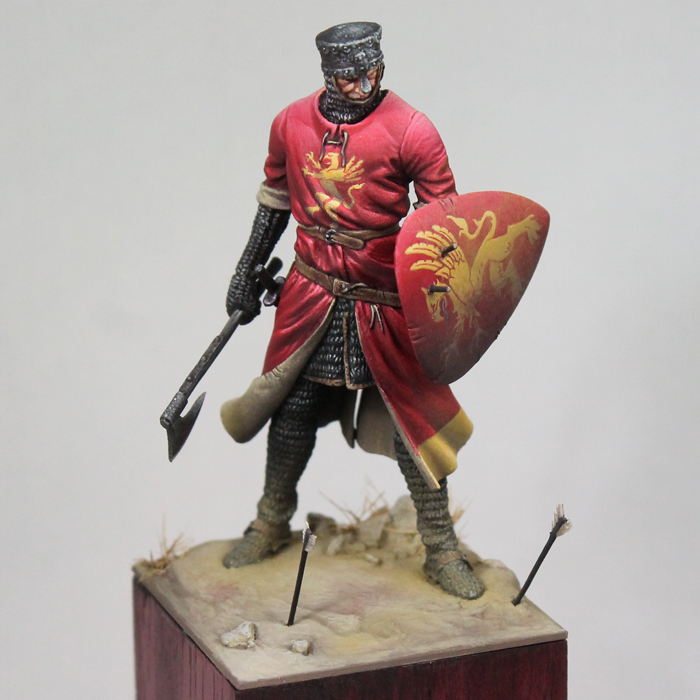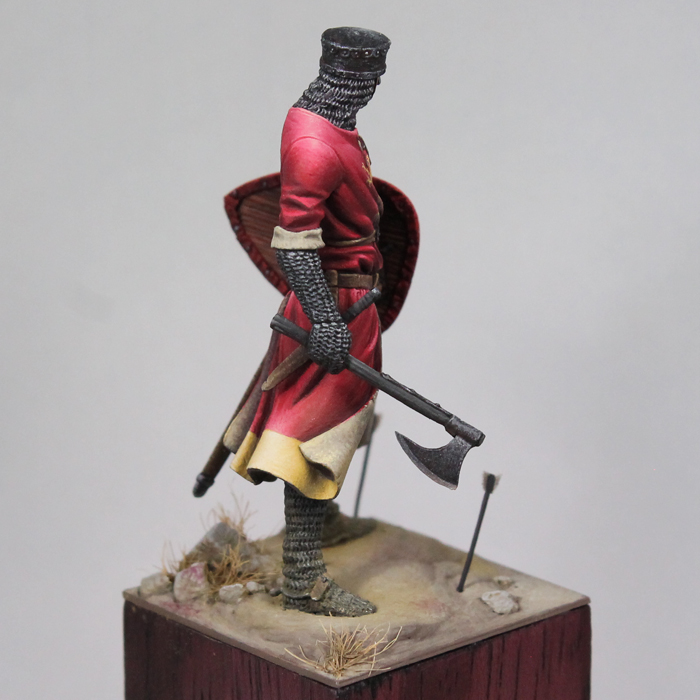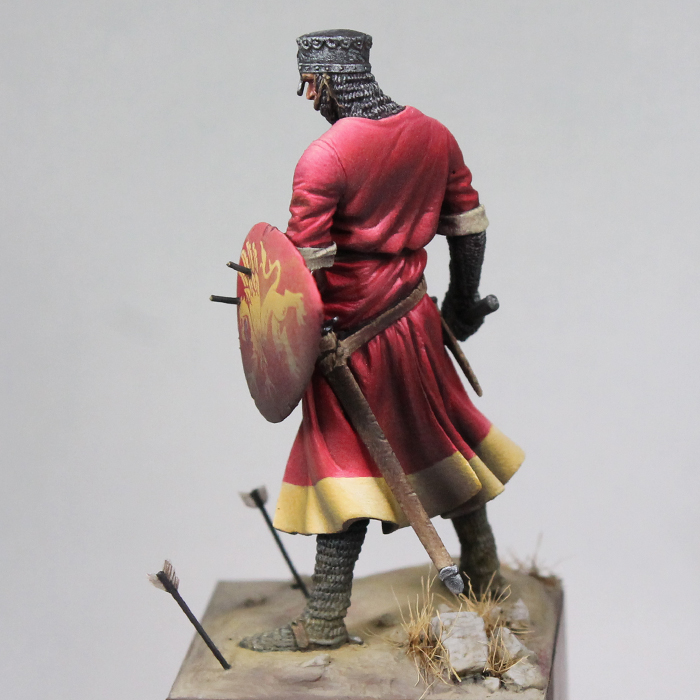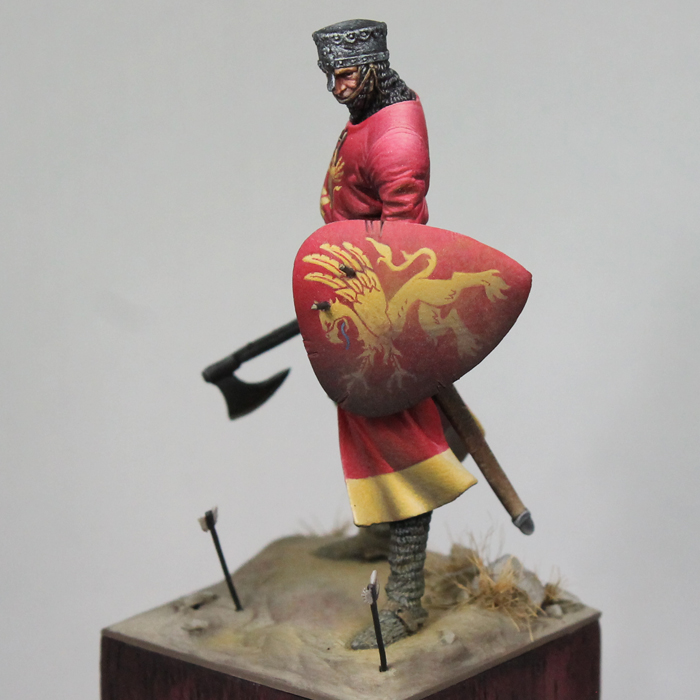I needed a break from the tiefling. It reached a stage where, though I really like the figure, I also kind of hate it. Just feels like a slog to make any progress. At those times, it's best to set it aside and work on something else. So, as I peered around my painting station, I realized my crusader has been almost complete for a few months now but I hadn't actually put on the finishing touches. No reason to delay it any longer, let's get him finished!
I had a few minor spots to paint (arrow shafts, dagger hilt, and a couple touch ups on his surcoat). After that I started weathering him. The scene is right at the start of a battle. I picture him standing outside of Acre or some other fortress and the defenders have just shot their first volley of arrows. Now the knight stands there looking back as if to say 'is that the best you can do?' Why is that important? Well the weathering is telling his story. If he's at the end of a battle, he might be covered with blood splatter. At the very least you'd expect some on his axe and shield. But at the start, not so much. I did add some faded blood stains though. There's one on his shield (it's subtle, but there) and some on the ground and rocks (this is land that's been fought on again and again).
Next I went about adding dirt and dust. This is a pretty dry climate, so no mud caked on his feet and legs. I just used dry pigments to add a fine layer of dirt on him. I focused on the shield and his legs. I didn't want to overdo it on his surcoat, so I left that pretty clean. Likely it'd be dirty too, but I'm taking some artistic license. ;) And with that, he's done! Here's how the final piece turned out...












